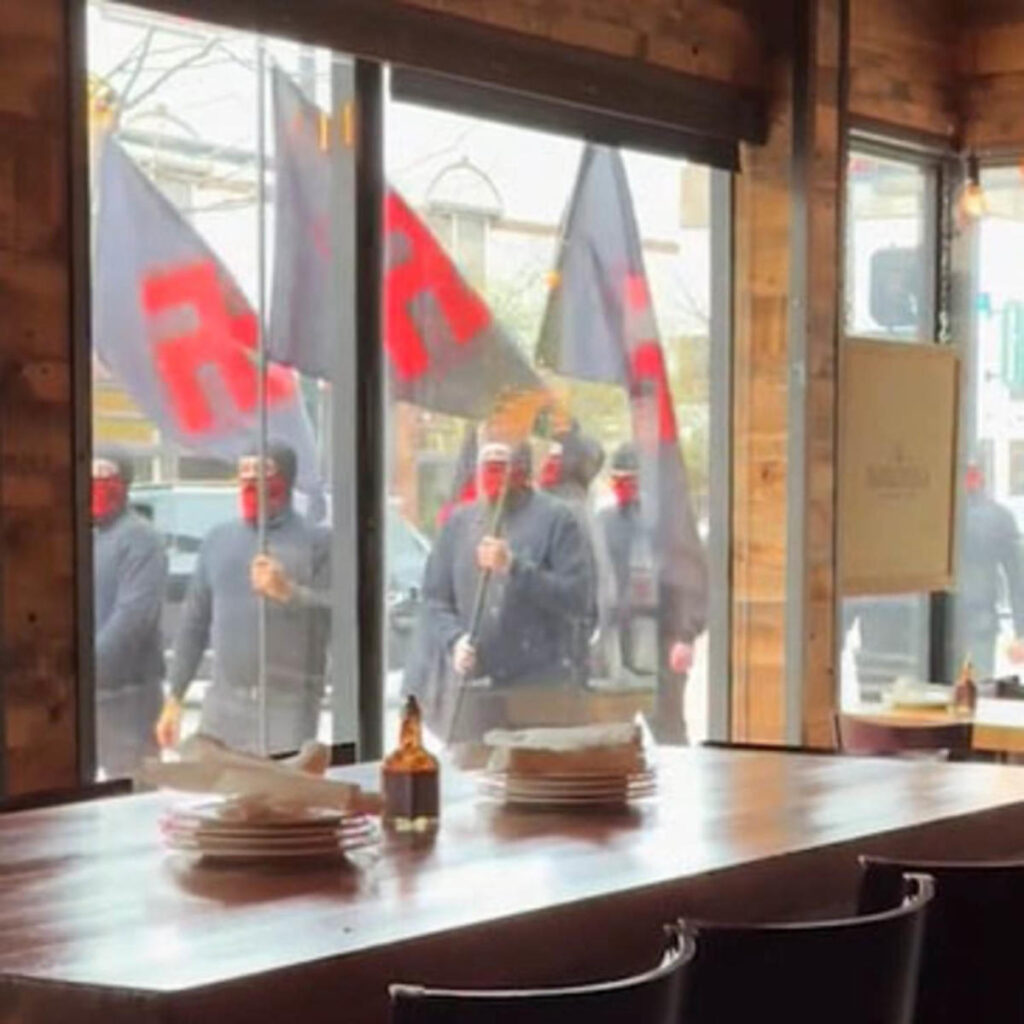On Monday, the White House expressed strong condemnation of a small but alarming neo-Nazi march that occurred in Columbus, Ohio, over the weekend. This march featured participants carrying black flags adorned with red swastikas while chanting racial slurs and white nationalist slogans. Eyewitness accounts detailed the demonstration, which took place in the Short North Arts District around 1:45 p.m. Videos from the scene confirmed the reports, showing at least 11 individuals dressed in black outfits and red masks, using a bullhorn to shout hateful rhetoric. The incident drew swift reactions from various leaders, including President Biden, who spoke out against the “hateful poison of Nazism, anti-Semitism, and racism,” characterizing these ideologies as fundamentally incompatible with American values, particularly the tenets of dignity and freedom of religion for all citizens.
Governor Mike DeWine of Ohio emphasized a zero-tolerance stance towards such hate-fueled demonstrations in his statement on X (formerly Twitter), noting that the state would not accept the presence of neo-Nazi groups peddling bigotry and violence. He highlighted the disturbing nature of the march, where individuals cloaked in anonymity propagated racist and anti-Semitic messages, contrasting this with Ohio’s commitment to inclusivity. Shannon Hardin, the president of the Columbus City Council, also voiced his disapproval, labeling the marchers as “pathetic” and asserting the community’s collective rejection of their hateful agenda. He drew a connection to political developments, attributing some of the recent emboldenment of extremist groups to the election outcomes that had favored Donald Trump. The comments highlighted the perceived link between mainstream politics and extremist violence, reminiscent of past comments made by Trump regarding white supremacist groups.
City officials, including Columbus City Attorney Zach Klein, noted that they were actively coordinating with law enforcement to monitor the situation and deal with the group involved in the march. Klein’s swift statement on social media urged the demonstrators to “go home and never come back,” emphasizing a community stance against such acts of hate. The regional director for the American Jewish Committee, Lee Shapiro, also reported that police were taking measures to control the situation, framing the march as yet another manifestation of the pervasive bigotry that has surfaced across the nation in recent years. The offensive demonstration elicited distress not only due to its explicit racism and anti-Semitism but also as a reflection of larger societal issues concerning the rise of extremist groups.
The broader context of anti-Semitic and nationalist rhetoric wasn’t limited to Columbus; it echoed with another shocking incident that had occurred just a week prior in Michigan. There, similar displays of hate took place outside a community theater production of “The Diary of Anne Frank,” leaving performers and attendees shocked. Such events emphasize an alarming trend in which far-right extremism is gaining visibility, prompting community leaders and citizens to mobilize against it. The events in Ohio and Michigan, both examples of hate-fueled turbulence, reveal underlying issues of tolerance and inclusion in the current sociopolitical climate.
In recent months, extremist groups have become more brazen in their actions, as noted by Oren Segal from the Anti-Defamation League. He highlighted that the neo-Nazi group, which took credit for the Columbus march, might have been partially motivated by rivalry with other extremist factions in the region. Meanwhile, the rise of false narratives—in this case, regarding Haitian immigrants in Springfield, Ohio—underscores how misinformation can fuel racial tensions, an outcome further exacerbated by the endorsement of such narratives by prominent political figures like Trump. This demonstrates a troubling synergy between political rhetoric and the actions of extremist groups, raising questions about accountability and the impact of speech on community dynamics.
The reactions from various stakeholders reflect a robust commitment to confronting hate and extremism head-on. Many community leaders reaffirmed that the presence of such extremist groups would not be tolerated and would be met with active resistance. The statements from Biden, DeWine, and local officials signify a united front against bigotry, emphasizing the importance of safeguarding vulnerable communities from the divisive tactics employed by hate groups. As regional leaders continue to address these challenges, the communal resolve to combat extremism underscores a crucial public dialogue on inclusivity, dignity, and democracy amidst rising tensions across the nation. The prevailing narrative suggests that a collective stand against hate is essential to preserving the values that define American society.

